International Morse Code
Imagine hiking up to a ten-point mountain top for the Summits On The Air contest, pulling out a matchbox size Morse code radio from your coat pocket, attaching a simple wire antenna and working a “pile up” of thirty Amateur Radio operators all wanting to contact YOU.
Introduction

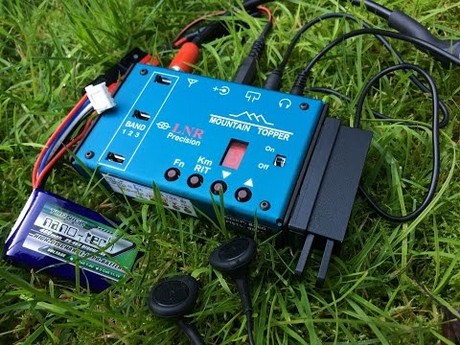
These days we are used to speaking to each other over the telephone (or mobile phone). Communications was not always so easy. Before telephony, that is "speaking over long distances" was invented all we could do was send text messages using a series of short and long signals called dots and dashes. It sounds very primitive by today's standards, but telegraphy which literally means "writing over long distances" was actually our first form of digital communications! Messages were sent in code which later became known as Morse code after Samuel Morse. Surprisingly with all the technical advancements we have made from telegraphy to telephony and now to television, Morse code is still in use today. Why? Because it is still the simplest and most reliable form of radio communication. It regularly out performs voice communications under noisy band conditions! Amateur radio operators call Morse code CW meaning Continuous Wave.
So how do you send Morse code? Easy: Just connect a telegraph key to your transmitter instead of a microphone. Instead of speaking into the microphone, you write down what you want to say and then send each character as a sequence of short and long signals (or dots and dashes) by tapping the key. Hold the key using the thumb at the side, the index finger on top and the second finger on the other side of the knob. When you press it lightly you will hear a tone. Press it quickly to send a dot and not so quickly to send a dash.
Instead of "A", "B", "C" send, which sounds like:
International Morse Code Chart
The following chart shows the arrangement of dots and dashes in the International Morse Code. The timing of the signals is important: A dash is three-times as long as a dot. The period of silence between dots and dashes in a character is the same as one dot. The period of silence between two characters is the same as three dots. The period of silence between two words is the same as seven dots.

International Morse Code Decoder Chart
The following chart shows a simple method to decode Morse code. It is no substitute for learning Morse code properly, of course, but it is fun to try. Begin at the START. Every time you hear a dot move to the right. Every time you hear a dash move to the left. By the time you hear a space you have already landed on the correct character.
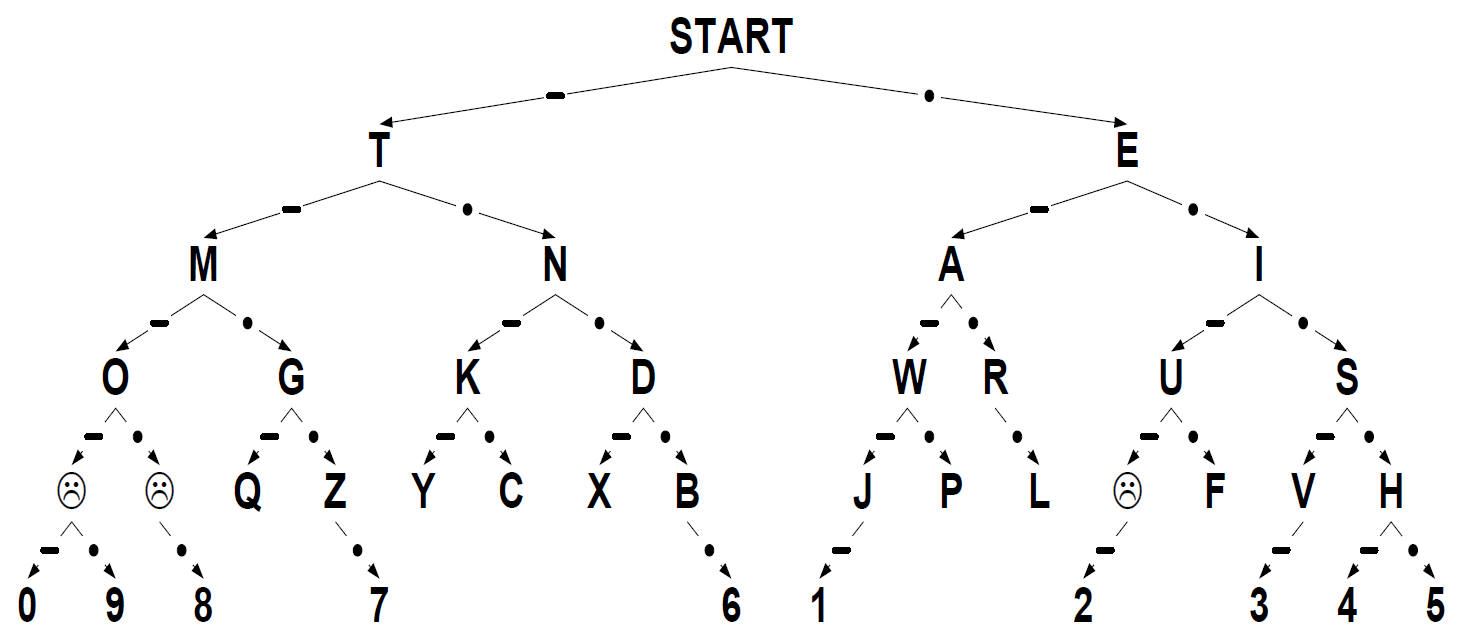
Learning Morse Code
Learning Morse code by yourself can be easier using free PC, tablet or smartphone apps. Download the app (with permission) and follow the lessons. The general idea is to learn to receive all the characters first and then try your hand at sending. The trick to getting proficient at Morse code is to be able to "hear" the the individual characters and not fall into the trap of "decoding" the dots and dashes in your head. If you find yourself thinking "One, two, thee dots and one dash....Hmmm that's a V" you are just decoding and will find it difficult to increase your speed. Instead you should just be thinking "Di-di-di-dah V", "Dah-di-di-dit B" etc.
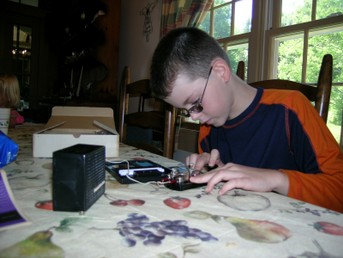
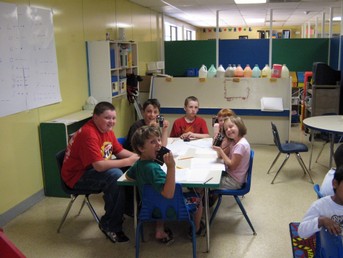
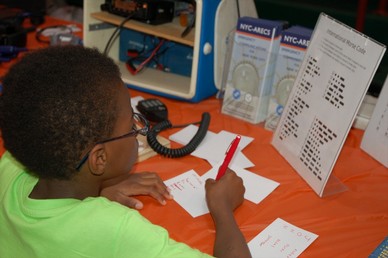
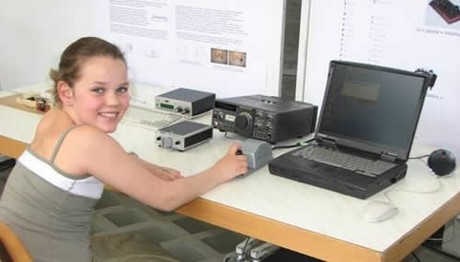
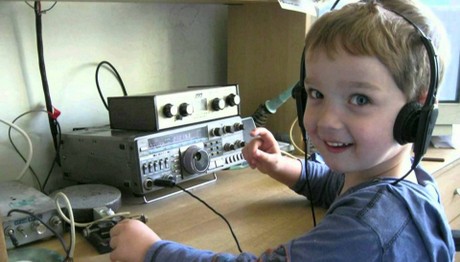
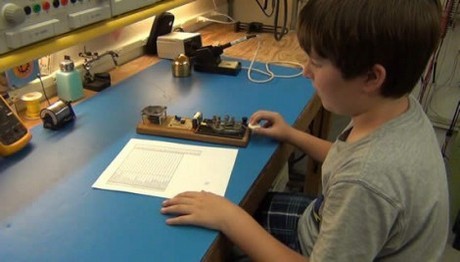
Preparation
You will need:
- A print out of the Morse code chart above for each student.
- Pens and paper for each student.
- Several Morse code practice sets (straight key and oscillator)
- PCs, Tablets or smart phones with "Learning Morse Code" apps (See: Related Information above)
Activity
- Introduce the purpose, structure and sounds of Morse code.
- Send each character to the group verbally (E.G. "Di-dah A", "Dah-di-di-dit B", "Dah-di-dah-dit C" etc). Students listen and repeat as a group.
- Send each character to the group using an app then say the character. Students listen and repeat as a group.
- Send a message to the group using an app. Pause between each character or repeat a character until everyone has it. Students write down the message.
- Send the name of each member of the group using an app at full speed.
- Practice learning Morse code. Send a few different characters (eg. K, M and R) randomly or use a Koch method trainer app. Students write down the characters without the help of the chart.
- Assign each code practice set to a group of two. Students take it in turns to send and receive.
Homework
- Get permission to download and install a Morse code app on a device at home.
- Use it to practice in your spare time. Tip: Use earphones so you don't distract others.
- At least learn to send your name in Morse code off by heart.
- Set up a lunchtime Morse code practice group.

